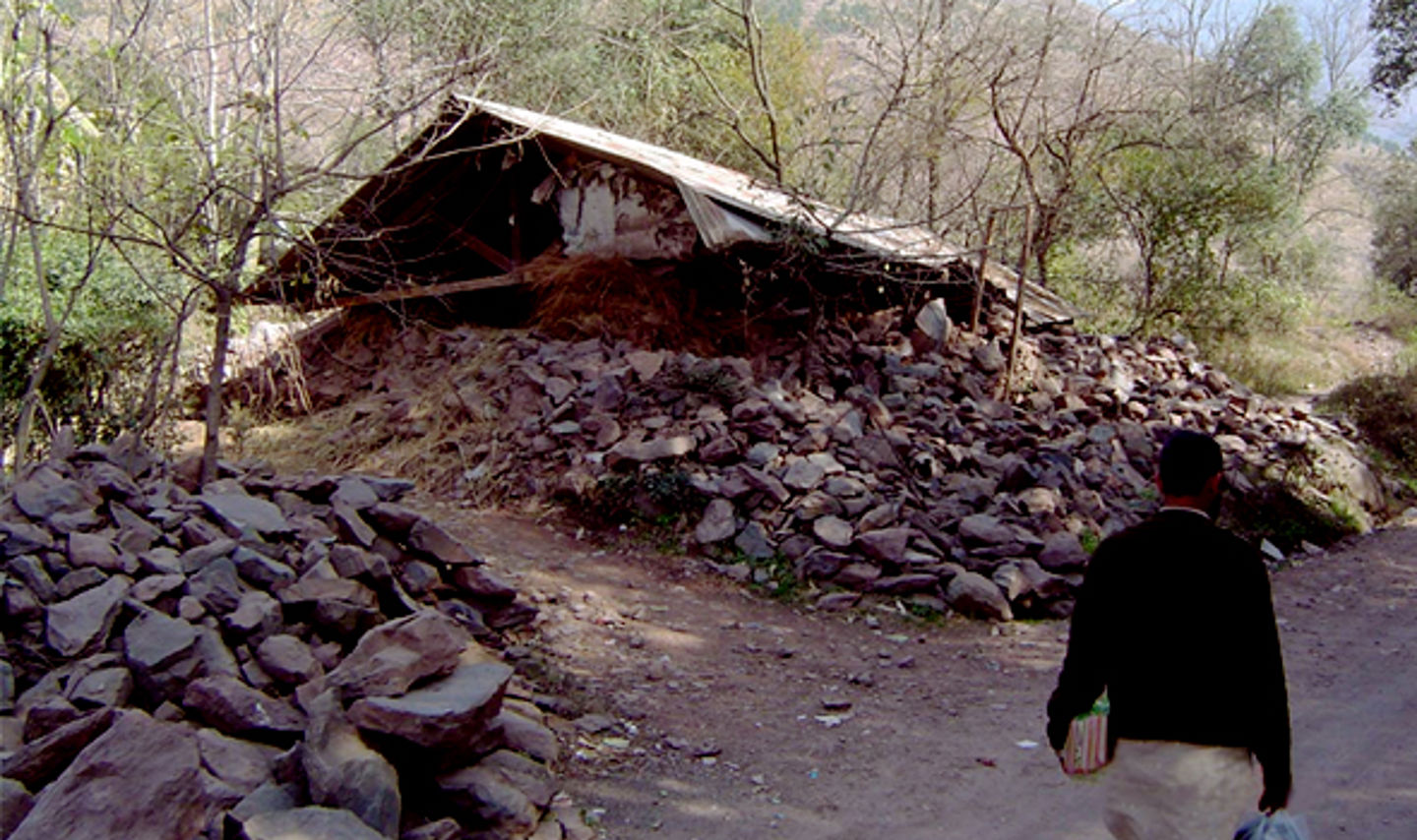- NGI /
- Projects /
- ICG - International Center for Geohazards /
- SP 3 - Earthquake hazard, risk, and loss
SP 3 - Earthquake hazard, risk, and loss
The project is engaged in research topics on quantifying earthquake hazards, seismic vulnerability, models for risk quantification, and loss modeling.

The project is engaged in the following fields:
- quantification of earthquake hazard (exceedance probability of a particular ground shaking amplitude/level), including the influence of soil amplification characteristics
- seismic vulnerability of the built and populated environment
- development of models and software tools for risk quantification (risk = vulnerability * hazard)
- loss modeling at different scales
Here, earthquake hazard refers to the occurrence probabilities of damaging ground motions, exclusively relating to natural phenomena and processes. At the same time, risk and loss result from combining the earthquake hazard with the vulnerability of the building stock.

Figure 1. Collapse of a dwelling due to the Kashmir earthquake of October 8, 2005
Introduction
Earthquakes hit without warning (Figure 1) but with a damage potential generally confined to a limited area around the epicenter or along the fault trace. In most cases, the combination of earthquake magnitude, poor building quality, and high population density of the area of highest shaking cause disasters. This is one of the reasons why, with the increasing population and urbanization in earthquake-prone countries, earthquake losses have increased significantly over the last decades (Figure 2).

Figure 2. (left) Global economic losses per decade in billions of US-$, normalized to the year 2000 value (Munich Re) and (right) risk curves due to storms, floods, and earthquakes for the city of Cologne, Germany. The data considers losses at buildings and in the sectors private housing, commerce, and industry for the year 2000 (courtesy of G. Grünthal, 2004). When comparing earthquake risk with other natural risks it is informative to see from Fig. 2 that, at low probabilities, the earthquake risk is far above the risk from other natural hazards (even in low-seismicity regions like e.g., Germany).
This implies that the earthquake damage increases strongly with decreasing occurrence probabilities (increasing return periods), which in turn means that the largest ones are rare but very destructive. This indicates that at any given location, one cannot rely on "human lifetime memory" as a basis for preventive measures: science is needed instead.
At present, earthquakes cannot be predicted within a reasonable time and spatial windows, and the possible disaster prevention is, therefore, to delineate the earthquake-prone areas and to understand in detail the factors that turn an earthquake into a disaster or prevents the same.
Only with such knowledge can society develop the capacity to limit future tragedies, and mitigation is a keyword for the work within the ICG SP 3.
Research topics
- Earthquake hazard and site amplification
- Seismic risk and loss analysis software (SELENA)
- Vulnerability
- Damage and loss estimation
Currently, SELENA computes seismic losses using the capacity spectrum method. The losses are calculated as aggregates of the inflicted damages to each building type within a predefined area (a city quadrant, census tract, or any user-specified area). The damage to the physical environment can then be converted to monetary damages and estimates of casualties using empirical relations. The damages are presented in tabular form, and any appropriate mapping or graphing software can display the results in easily understandable figures. - Illustration of risk and loss results - RISe
- Tsunami modeling
- Soil amplification studies
Related external projects
Several related projects proceeded in 2008, including the EU projects LESSLOSS, NERIES, SAFER, and TRANSFER. In addition, MFA (UD) funded projects in Central America, Pakistan, and India. The coordination between ICG Project 3 and these projects will be essential in the coming years.
Within NERIES, NORSAR is charged with coordinating the development of shake maps for Europe and will also take part in evaluating risk estimation software and loss assessments. Within SAFER, NORSAR is responsible for developing real-time damage scenarios, where the city of Naples and possibly Bucharest will be used as targets.
Another activity under the SAFER project is for NORSAR to develop rapid epicenter solutions based on array data processing. NORSAR also has a small component in TRANSFER, focusing on tsunami-generating earthquake sources in the North Atlantic.
Plans for 2008
- Further development of the SELENA software with the main focus on distribution and application
- Expansion and adjustment of the RISe software
- Strengthening of structural modeling and nonlinear analysis capacities
- Further work on intra-plate ground-motion models (EU)
- Tsunami source modeling of fault dislocations (cooperation with ICG Project 10)
- Numerical simulation of H/V-data and further work on site amplification
- Cooperation and coordination with other projects (EU, MFA)
- Development of competence for multi-hazard and risk mitigation (earthquakes, tsunami, landslides)
- Visitors program (including students)
- Publications (papers and reports)
- 5 Publications 2007-2009
Papers, Publications, and Reports
See here for documents, publications, and reports from this research area, SP 3 "Earthquake hazard, risk, and loss."
Personnel
- Hilmar Bungum (leader)
- Amir M. Kaynia
- Daniela Kühn
- Dominik Lang
- Conrad Lindholm
- Sergio Molina
- Volker Oye